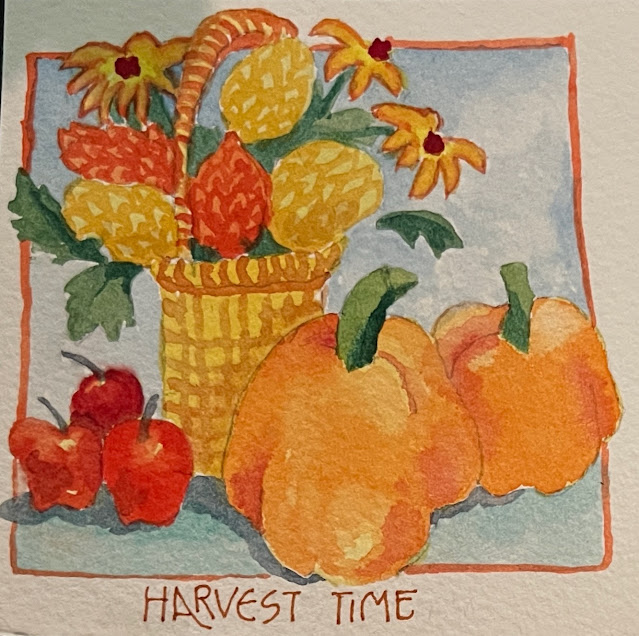Most movies are entertaining in the moment and then disappear from our thoughts, but others leave a lasting impression. The 2000 movie, Pay It Forward, made me think of ways I could pay it forward too. A local hospice organization has offered just such an opportunity.
The choice of hospice is often a difficult one to make. I first experienced hospice services at the end of my father-in-law's life. He was in a hospital and was moved from active patient care to hospice rooms. He died shortly after. My mother-in-law also was placed in hospice at the skilled nursing facility where she lived. Again, the service provided the loving care that was needed at the end of her life.
When I read that one of our local hospice groups wanted artists to submit small works of art that could be displayed in a hospice patient's room, I jumped at the chance. Here was one way I could pay it forward. The artwork they requested needed to be as small as 4 inches by 4 inches and easily displayed.
The first time I brought artwork to them a few years ago, the hospice volunteers were so appreciative of my work that I vowed to continue to support them each year when they asked for more art. COVID intervened; but this year Hope Hospice is back collecting small art pieces again, with a more definitive set of guidelines for the work they will accept. Because many of their patients have some level of dementia, the artwork needs to be representational, not abstract. The Hope Hospice program gives artists a way to bring a little bit of brightness and joy to someone at the end of their life. I hope other hospice services have picked up on this program so that artists in different parts of the country can pay it forward too.
To read or submit artwork to Works of Hope, click here.
.jpeg)

.jpeg)
.jpg)
.jpg)
.jpg)

.jpeg)
.jpeg)
.jpeg)
.jpeg)


.jpeg)
.jpeg)
.jpeg)
.jpeg)




